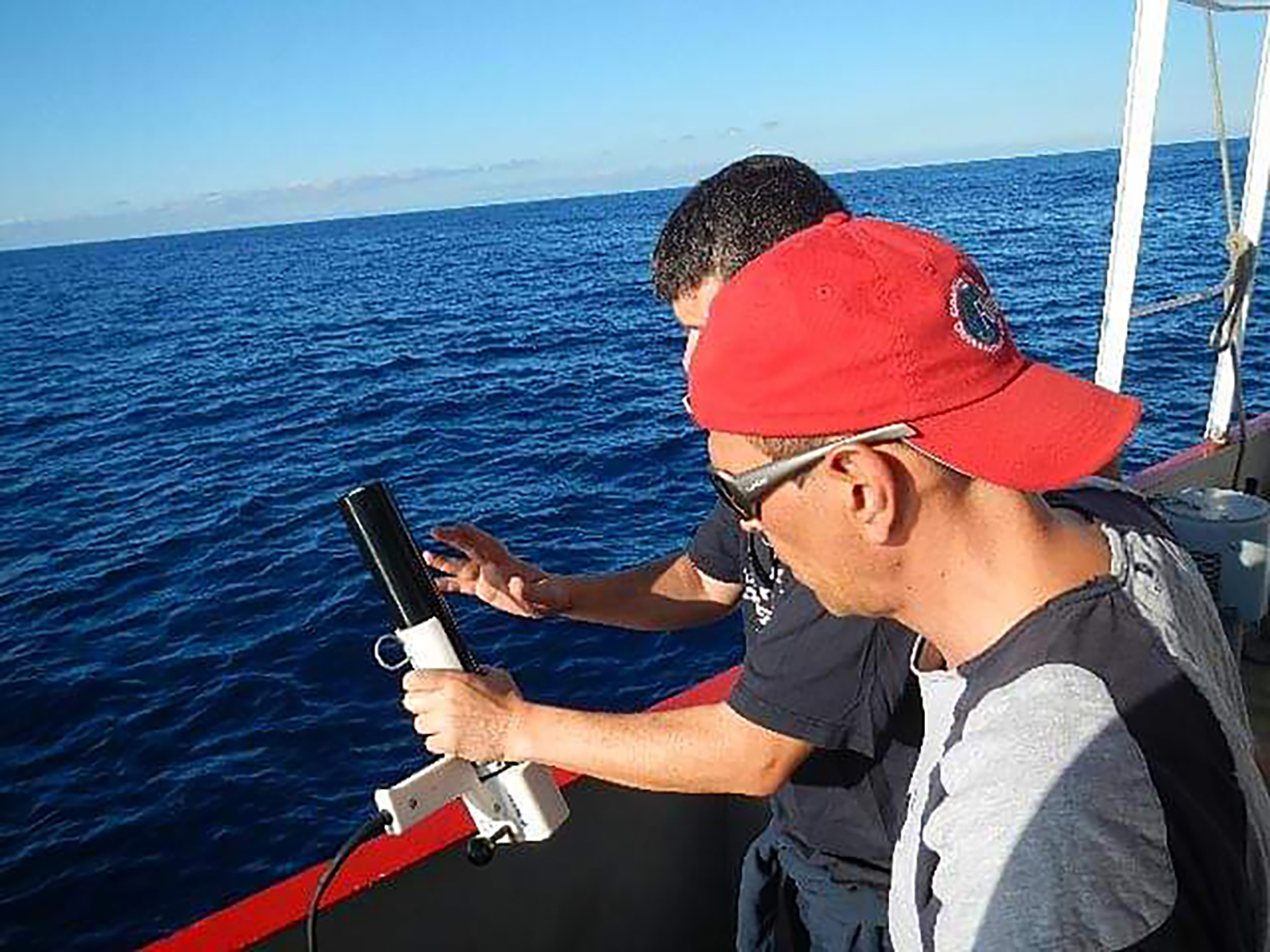It is expected that these cyanobacteria will be present in the Archipelago until the month of October and that the warming of the waters of Macaronesia will increase their proliferation in the coming years.
A team formed by researchers from the Institute of Sustainable Aquaculture and Marine Ecosystems (ECOAQUA), the Institute of Mathematical Sciences of the CSIC (ICMAT/CSIC) and the technology company DIGITAL EARTH SOLUTIONS (DES), have documented between the months of June and September the appearance of massive blooms of Trichodesmium cyanobacteria in the coastal waters of Gran Canaria, as well as in the western islands of the Canary Archipelago (Tenerife, La Palma, La Gomera and El Hierro), whose presence could extend until October in a visible way.
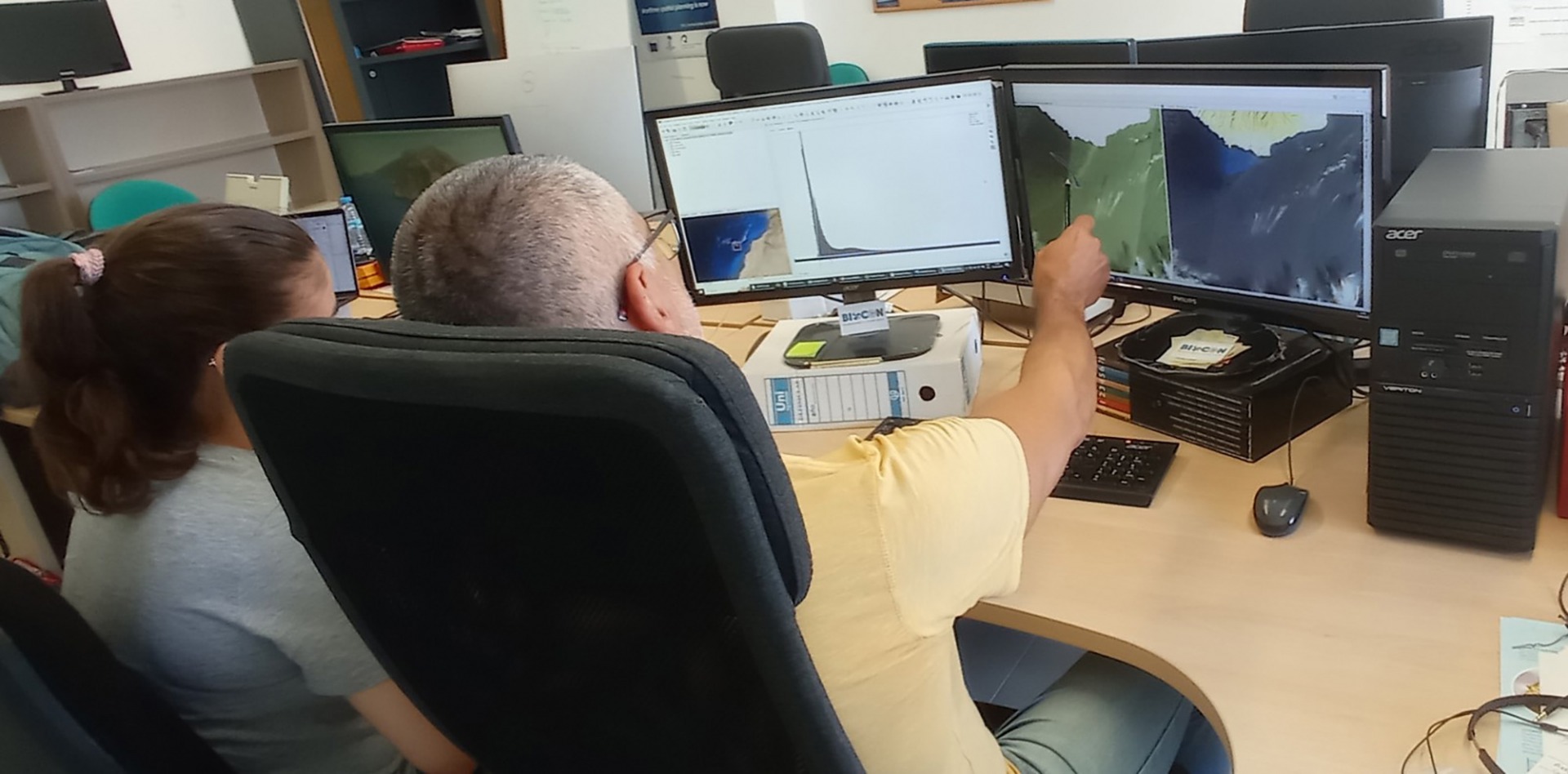 Remote Sensing Equipment at the ECOAQUA Institute of the ULPGC
Remote Sensing Equipment at the ECOAQUA Institute of the ULPGC
This type of cyanobacteria is very common in subtropical and tropical areas in waters with temperature ranges above 23ºC. Since the massive bloom reported in 2017, their presence in Canary waters is beginning to be more frequent due to the global warming of the Atlantic Ocean in Macaronesia and the consequent increase in temperature in this area. Scientists predict that their arrival will occur periodically, although they state that, although it is not advisable to swim in their presence, their appearance is positive for the environment by fixing carbon dioxide (as do the rest of the vegetable communities), oxygenating the waters in which they are located, and feeding the rest of the trophic chain.
The investigation has been led by scientists Antonio González Ramos from ECOAQUA and Guillermo García Sánchez from DES; with the participation of researchers Alejandro García Mendoza and Ángel Rodríguez Santana, from ECOAQUA, and Ana María Mancho from ICMAT/CSIC.
According to Professor González Ramos, the colonies in the form of “capsules” (trichomes) appear on the surface when it is calm and “disappear” with the wind, sinking and dispersing when they return to their unicellular form. “The population must learn to live with them. Therefore, when the blooms reach the coast degraded, they form whitish “creams” (caspases) that release ammonia which, in addition to generating bad odors, can cause hives in case of direct contact. Swimming should only be banned on the beaches (or sectors) where they appear, as would be done in the case of the appearance of blooms of jellyfish in coastal waters” he states.
The study began with the identification of massive blooms of Trichodesmium sp., through the use of very high resolution scenes (10m. *10m.) from the European constellation of SENTINEL 2A and 2B satellites of the European environmental monitoring program COPERNICUS. In each analyzed image, different RGB (red, green and blue) combinations were made among the 13 available bands, with the purpose of identifying the presence of the aforementioned cyanobacteria in the different environmental scenarios.
Once the blooms have been identified in the satellite images, they are isolated from the rest of the scene, and projected spatiotemporally by means of hourly current fields obtained from the European COPERNICUS Marine System. An advanced mathematical model developed by ICMAT/CSIC, the DES company and the ECOAQUA institute of the ULPGC is used to predict accurately the time and place of arrival of the cyanobacteria accumulations to the coasts, within up to 72 hours.
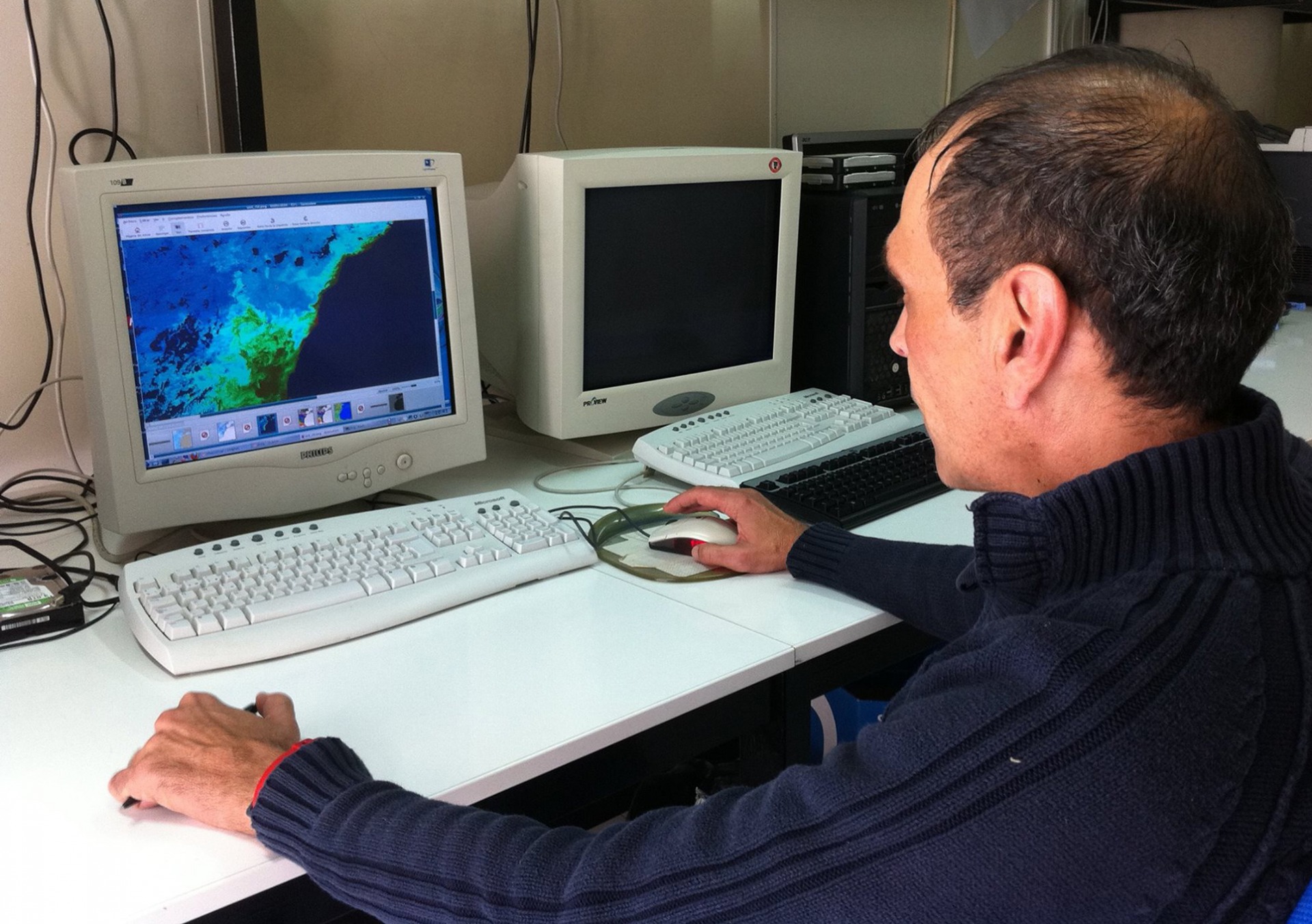 Antonio González Ramos observing phytoplankton blooms in satellite scenes.
Antonio González Ramos observing phytoplankton blooms in satellite scenes.
The cyanobacterial blooms form large “patches”, or “filament lines” of tens of kilometers in length, depending on the coastal dynamics at each geographical point of the islands. In both cases, the developed system is capable of detecting and predicting their hourly evolution including possible break-ups and subdivisions of the original shapes obtained from the satellite images.
Until to now, the bloom has affected most of the beaches located in the southeast and southwest of Gran Canaria (although there have been reports of bloom arriving at Las Canteras coinciding with the periods of calm in the northern sector of Gran Canaria).
In the western islands it affected the southeast, south and southwest of Tenerife, the east and south of El Hierro, the west of La Palma and the entire south of La Gomera. During the month of August, swaths of all sizes, many of which measured tens of kilometers in length, were found in the calm waters of the western islands. Specifically, one of the reports of Trichodesmium (located in southern La Gomera and eastern El Hierro), covered an area of 100 square kilometers.
This innovative prediction methodology has already been previously tested and published in international journals by this team of researchers in the framework of the European H2020 IMPRESSIVE project, which had the objective of reporting and evolution of oil spills in port waters, and intervened in cases such as the sinking of the Russian fishing vessel Oleg Naydenov in 2015 in waters south of Gran Canaria, the spill of the ferry Volcan de Tamasite in Puerto de la Luz in 2017 or the multiple oil spills that ravaged the coasts of the eastern Mediterranean in 2021.
What is the Trichodesmium sp,?
It is a phytoplanktonic prokaryotic species that “invented” normal photosynthesis 3.5 billion years ago, which has been inherited by its eukaryotic descendants (microalgae, macro algae and higher marine plants). Like these, Trichodesmium consume Carbon Dioxide (CO2), produce Oxygen (O2), and feed the rest of the marine trophic chain.
Trichodesmium has however the (unique) particularity of being “diastrophic”: it’s able to fix Nitrogen (N2) when there is no Nitrate (NO3), a dissolved gas available in the water (which is the form of Nitrogen used by the rest of unicellular or multicellular marine and terrestrial vegetables). Therefore, when the sea is very warm, NO3 from deep waters does not appear on the surface making the rest of the blooms of microalgae, macro algae or higher marine plants unable to proliferate.
When the waters cool and mix with the deeper waters, NO3 reappears in the surface waters and with it, the rest of the marine vegetables (micro and macro algae) responsible for the sequestering of CO2 in the ocean and the consequent production of O2, start to reproduce again.
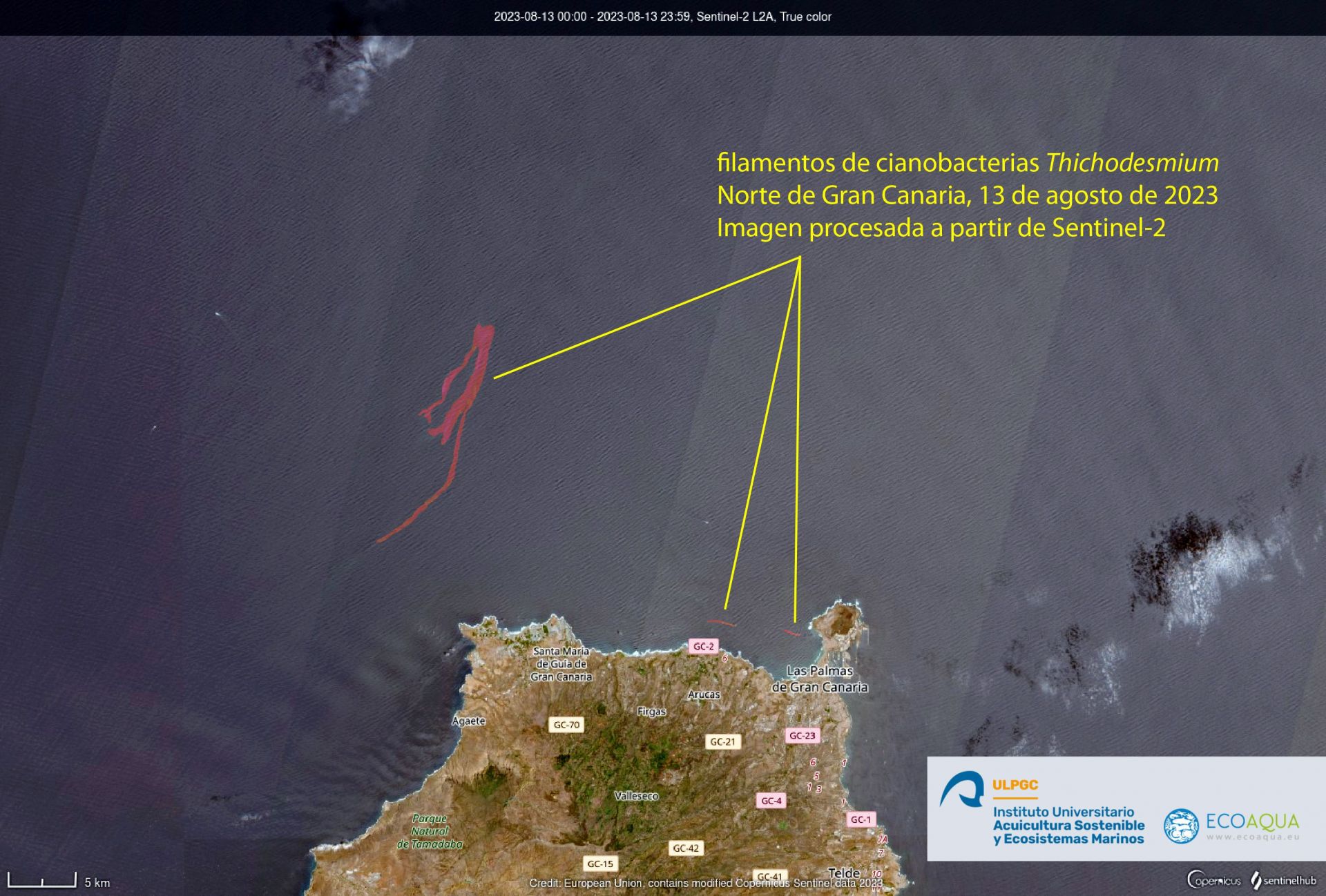 Thichodesmium cyanobacteria filaments North of Gran Canaria, August 13, 2023 image processed from Sentinel-2
Thichodesmium cyanobacteria filaments North of Gran Canaria, August 13, 2023 image processed from Sentinel-2
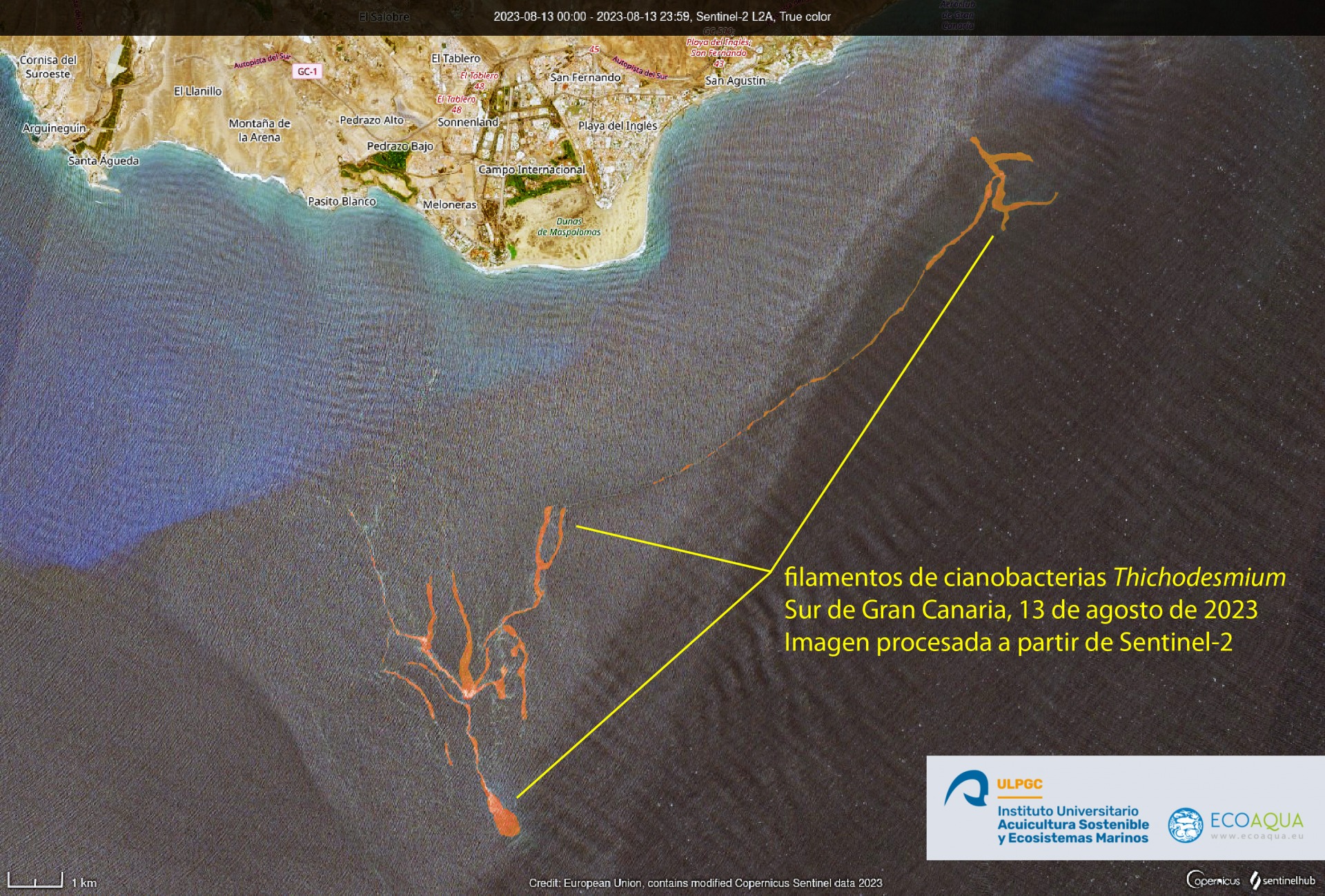 Thichodesmium cyanobacteria filaments South of Gran Canaria, August 13, 2023 image processed from Sentinel-2
Thichodesmium cyanobacteria filaments South of Gran Canaria, August 13, 2023 image processed from Sentinel-2
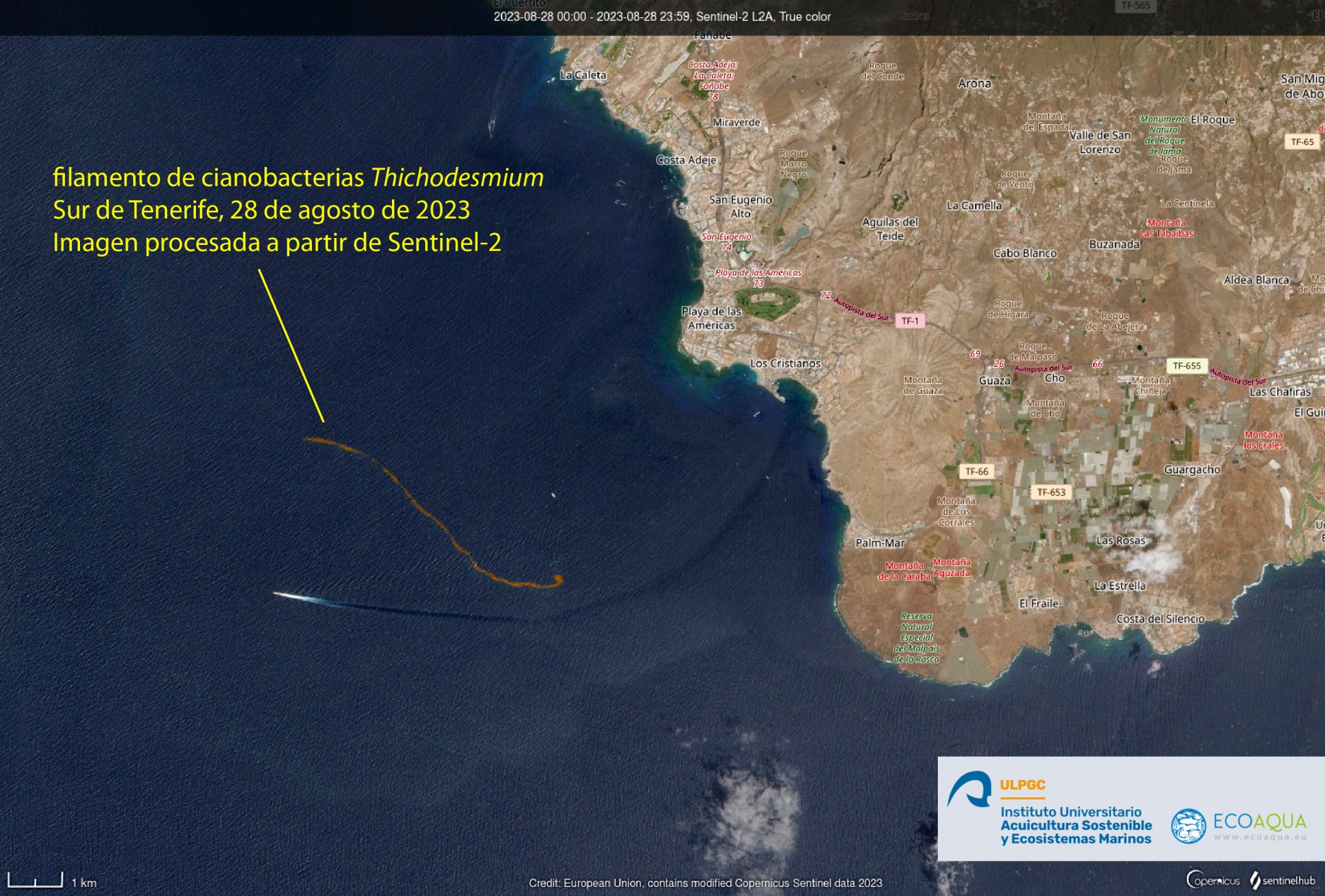 Thichodesmium cyanobacteria filament South of Tenerife, August 28, 2023 image processed from Sentinel-2
Thichodesmium cyanobacteria filament South of Tenerife, August 28, 2023 image processed from Sentinel-2
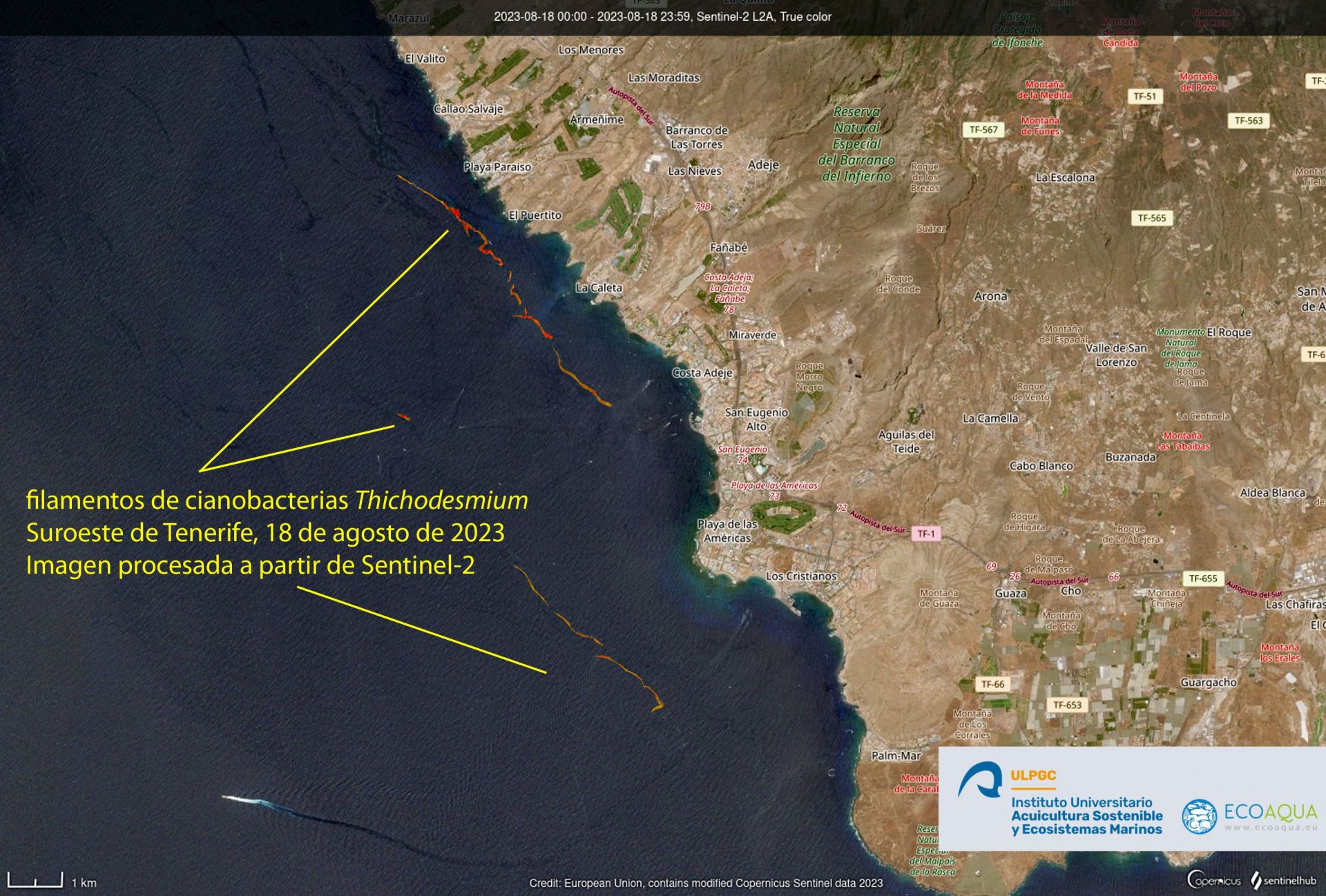 Thichodesmium cyanobacteria filaments Southwest of Tenerife, August 18, 2023 image processed from Sentinel-2.
Thichodesmium cyanobacteria filaments Southwest of Tenerife, August 18, 2023 image processed from Sentinel-2.
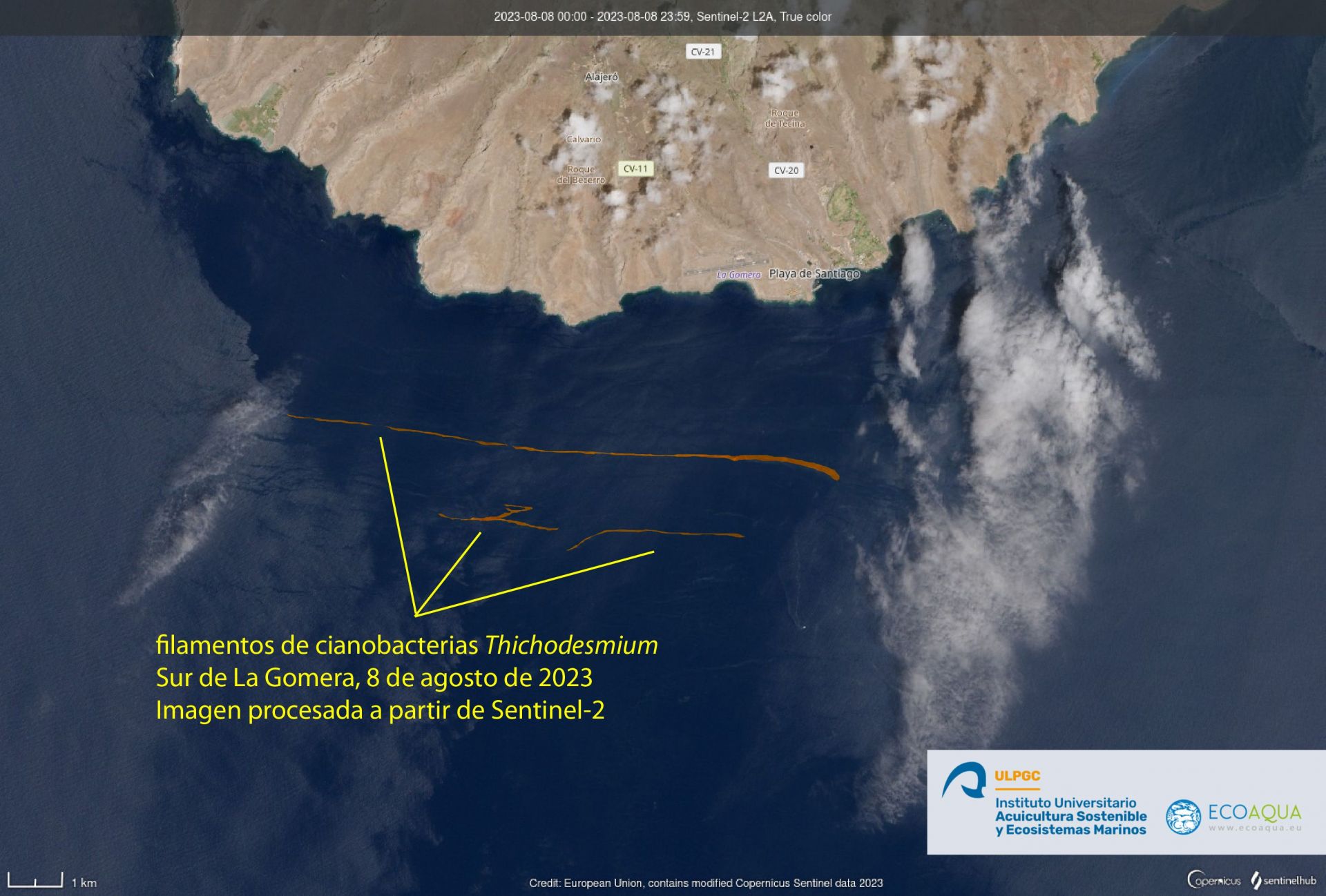 Thichodesmium cyanobacteria filaments South of La Gomera, August 8, 2023 image processed from Sentinel-2
Thichodesmium cyanobacteria filaments South of La Gomera, August 8, 2023 image processed from Sentinel-2
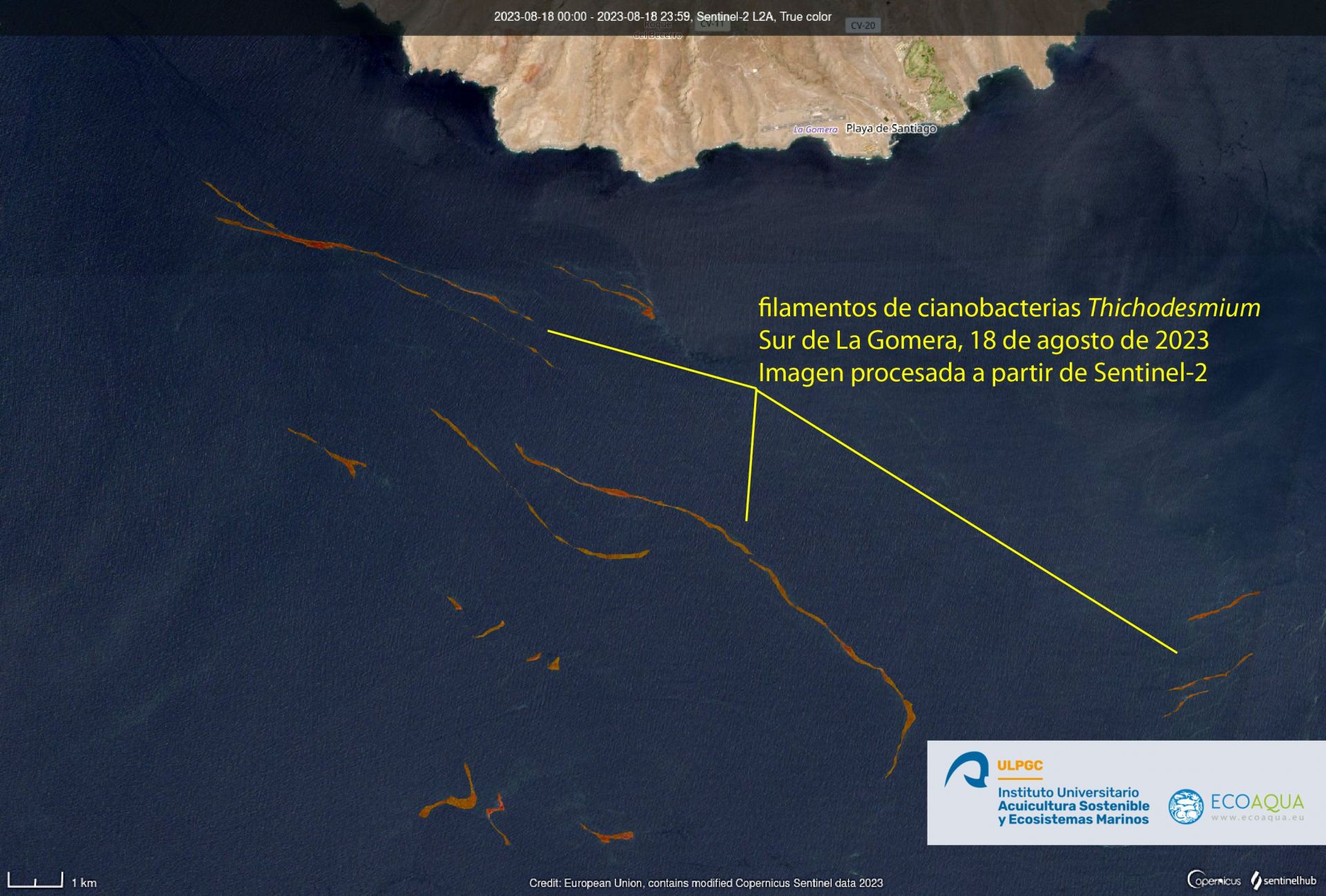 Thichodesmium cyanobacteria filaments South of La Gomera, August 18, 2023 image processed from Sentinel-2
Thichodesmium cyanobacteria filaments South of La Gomera, August 18, 2023 image processed from Sentinel-2
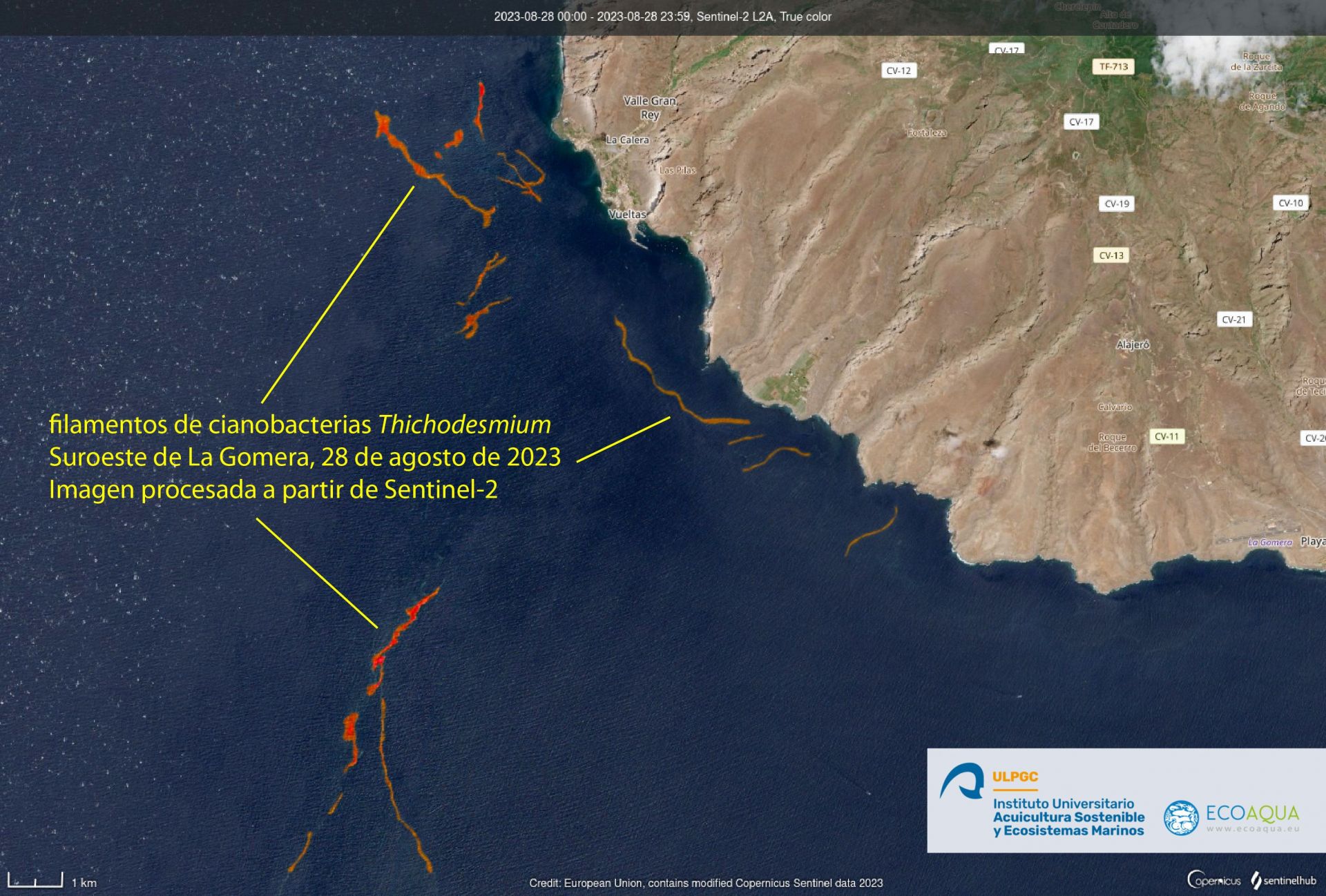 Thichodesmium cyanobacteria filaments Southwest of La Gomera, August 28, 2023 image processed from Sentinel-2.
Thichodesmium cyanobacteria filaments Southwest of La Gomera, August 28, 2023 image processed from Sentinel-2.
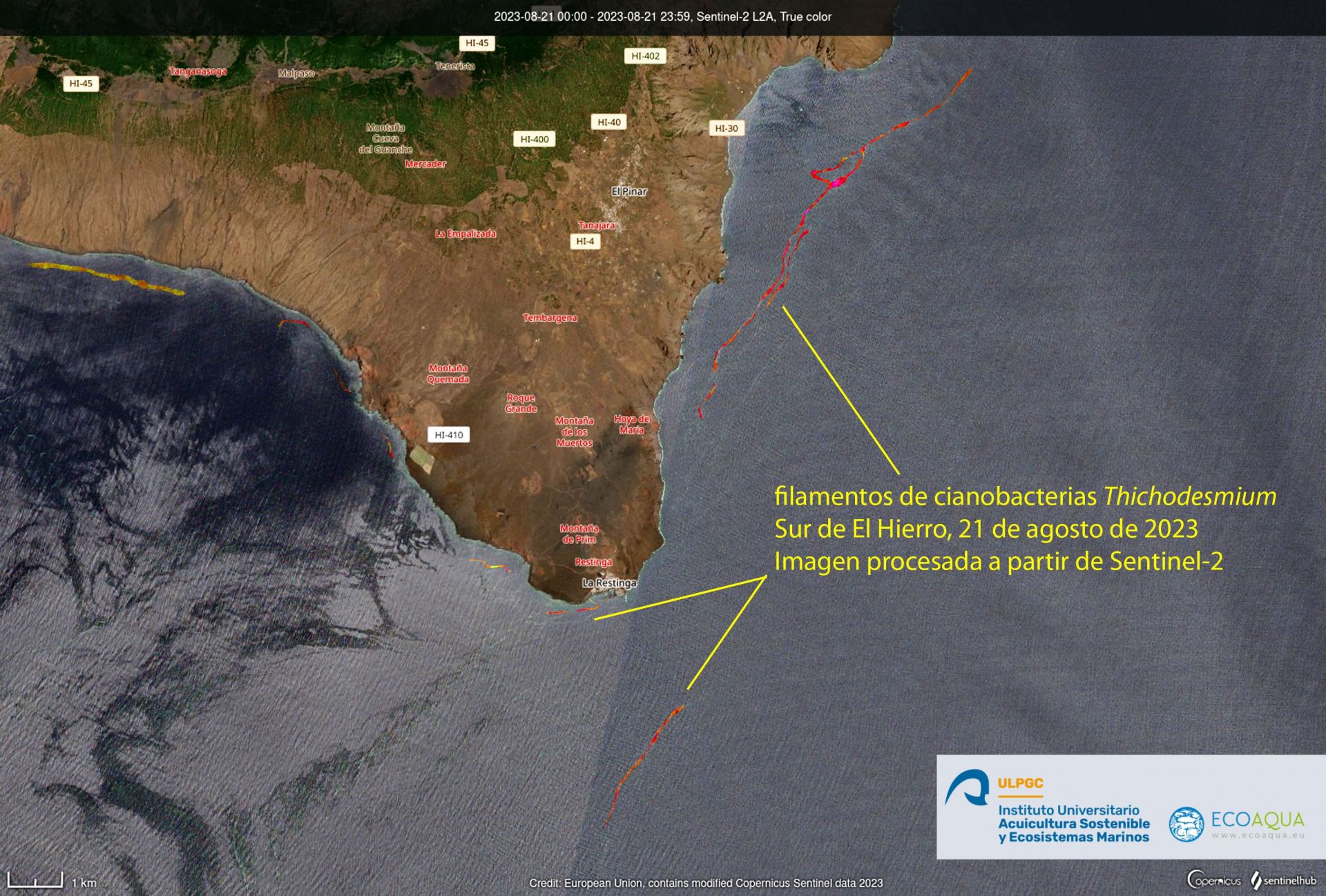 Thichodesmium cyanobacteria filaments South of El Hierro, August 21, 2023 image processed from Sentinel-2
Thichodesmium cyanobacteria filaments South of El Hierro, August 21, 2023 image processed from Sentinel-2
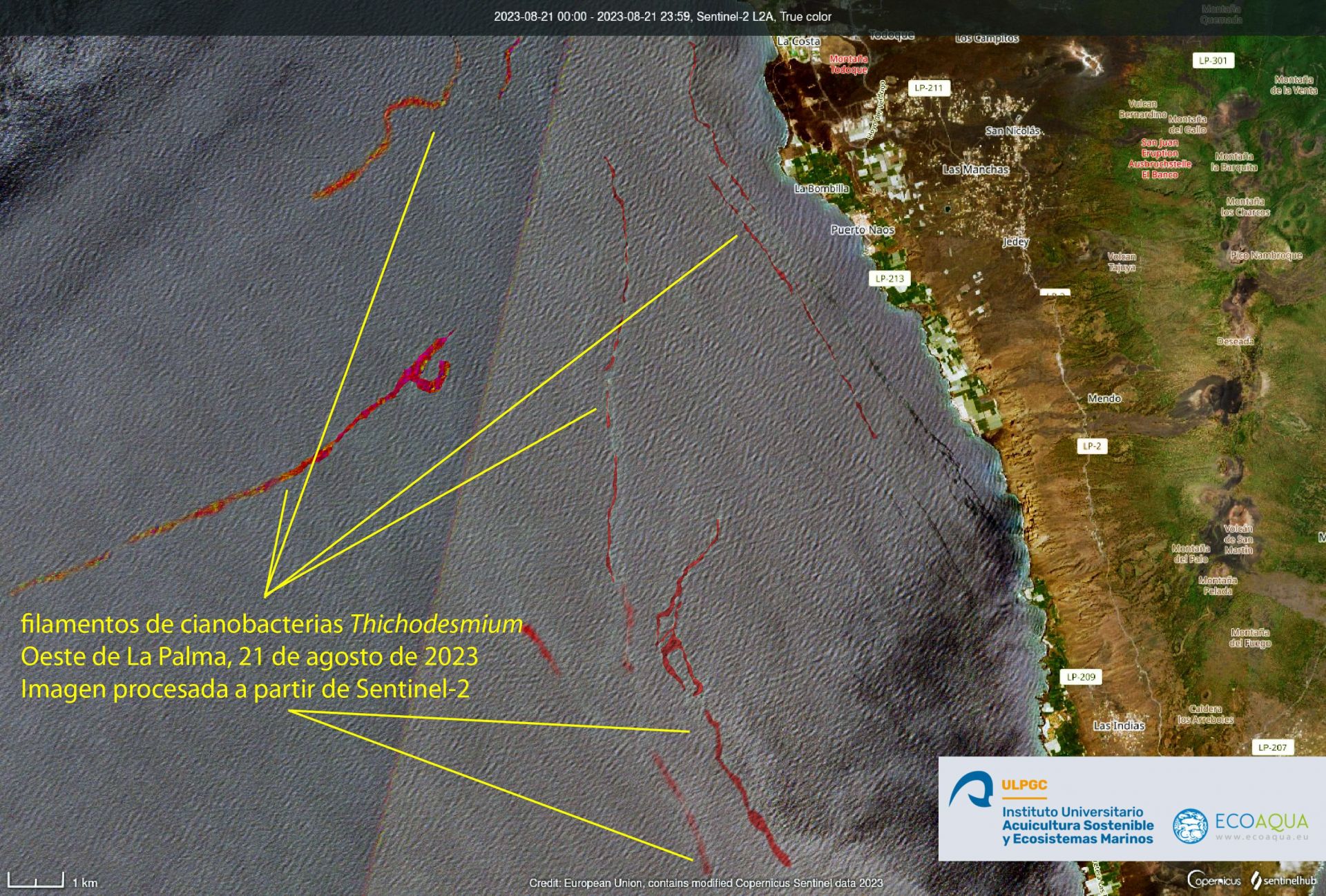 Thichodesmium cyanobacteria filaments West of La Palma, August 21, 2023 image processed from Sentinel-2
Thichodesmium cyanobacteria filaments West of La Palma, August 21, 2023 image processed from Sentinel-2
For more information: Beatriz Díaz beatriz@mandarinacomunicacion.es 620410871


